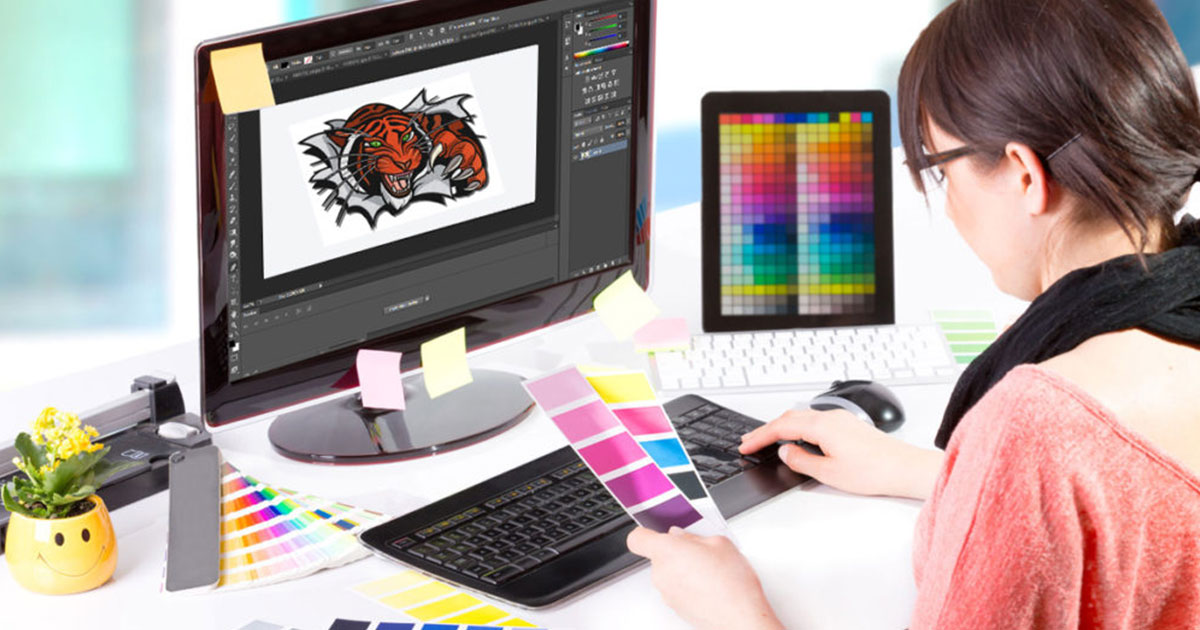Understanding the Embroidery Digitizing Process: Your Ultimate Overview
Needlework digitizing is a thorough craft that requires precision and experience to translate intricate designs into digital formats for device embroidery. As craftsmens get started on this trip to understand the needlework digitizing procedure, a thorough understanding of the essentials establishes the structure for excellence.

Comprehending Embroidery Digitizing Basics
Needlework digitizing essentials create the structure whereupon detailed designs are translated into machine-readable formats for accurate stitching. This initial step in the embroidery digitizing process is crucial for ensuring that the final stitched item is a loyal depiction of the initial layout. Recognizing needlework digitizing fundamentals includes comprehending essential ideas such as stitch kinds, sew instructions, density, underlay, and pull compensation.
Sew kinds play a crucial function in identifying the visual and textural outcome of the stitched layout. By selecting the appropriate stitch type, whether it be satin, fill, or running stitch, digitizers can attain the wanted impact and enhance the overall top quality of the needlework. Furthermore, stitch instructions affects the flow and measurement of the design, while density determines the spacing and coverage of the stitches.
In addition, padding stitching provides security to the style by securing the textile and stopping distortion during the needlework procedure. Pull compensation is an additional crucial consideration to counteract the all-natural tendency of textile to contract when sewn. Grasping these needlework digitizing fundamentals is fundamental for developing professional-quality embroidered items.
Choosing the Right Digitizing Software Application
Picking the appropriate digitizing software application is a critical decision that dramatically impacts the effectiveness and top quality of the needlework digitizing process. Digitizing for Embroidery. When selecting the ideal digitizing software application, it is necessary to take into consideration factors such as the complexity of styles you prepare to produce, the user-friendliness of the software program, the degree of customer support provided, and the compatibility with your embroidery maker
There are different digitizing software application options available on the market, ranging from fundamental programs for novices to innovative software program for specialist digitizers. Some preferred selections consist of Wilcom EmbroideryStudio, Hatch Needlework Software Program, and PulseID. These software program plans supply a wide range of tools and features to help you develop intricate layouts effortlessly.
Prior to deciding, it is suggested to discover the various software program choices through complimentary trials or trials to figure out which one finest matches your needs. In addition, reading reviews and seeking referrals from skilled digitizers can provide valuable insights into the toughness and weaknesses of each software application package (Digitizing for Embroidery). By carefully reviewing your needs and comparing the features of various digitizing software application, you can make an informed choice that boosts your embroidery digitizing workflow
Digitizing Devices and Techniques

Optimizing Style Setup for Embroidery
Mastering the complexities of design settings is fundamental in achieving optimal results in the embroidery digitizing process, structure upon the structure laid by recognizing digitizing devices and strategies. When maximizing layout setups for needlework, it is important to take into consideration factors such as stitch kind, thickness, rug, pull compensation, and registration. Sew kind choice affects the overall look and feeling of the style, with choices like satin, fill, and running stitches providing different appearances and results. Thickness refers to the spacing and thickness of stitches, influencing the style's protection and resilience. Proper padding sewing offers stability and protects against material distortion, particularly for complex layouts or on elastic products. Pull compensation readjusts for material stretch during sewing, making sure accurate design duplication. Enrollment settings straighten different elements of the design precisely, maintaining total style honesty. By fine-tuning these style settings, embroiderers can improve the quality and accuracy of their embroidered productions.

Troubleshooting Common Digitizing Issues
When experiencing usual digitizing problems throughout the embroidery process, it is vital to comprehend the origin causes and apply effective options promptly. One typical trouble is stitch density More hints issues, where stitches may be also dense, triggering the textile to pucker, or as well sparse, resulting in spaces in the style. Readjusting the stitch density setups in the digitizing software application can aid solve this concern.
Another constant obstacle is thread breaks throughout the embroidery process. This can take place as a result of numerous reasons such look at this now as inaccurate stress setups, plain needles, or using low-quality thread. Making sure correct maintenance of the embroidery device, including routine needle modifications and stress changes, can minimize the occurrence of thread breaks.
Additionally, layout enrollment mistakes can cause misaligned elements within the embroidery design. Inspecting the style positioning in the digitizing software application and making essential adjustments before stitching can assist in preventing this problem. By resolving these usual digitizing issues quickly and efficiently, you can make certain a smoother needlework procedure and premium completed products.
Final Thought
To conclude, understanding the needlework digitizing procedure calls for a strong understanding of the essentials, the right choice of software, and knowledge of devices and strategies. Enhancing style settings and troubleshooting common digitizing concerns are crucial action in ensuring high-quality needlework results. By following these steps diligently, one can attain accuracy and effectiveness in the digitizing process.